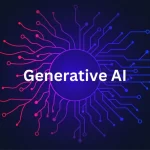
Emerging Trends in Bioinformatics and Personalized Medicine: From Sequence Analysis to AI-driven Multi-omics Approaches
October 13, 2023In recent years, the realms of bioinformatics, computational biology, omics, and personalized medicine have witnessed a revolutionary transformation. A closer look at these disciplines’ developmental trajectory reveals a transition from a more fragmented and siloed research approach to a holistic, integrated one, primarily propelled by technological advancements. This essay delves into the major trends and shifts observed over the last five years, painting a clear picture of the evolving landscape of these intertwined domains.
Bioinformatics: From Sequencing to Personalized Medicine
Bioinformatics, once primarily concerned with sequence analysis, has burgeoned into an expansive field that touches upon whole genome or transcriptome annotation. The modern era of bioinformatics is characterized by its increasing tilt towards integrative and translational genomics, offering the promise of personalized medicine. This evolution not only amplifies our understanding of genomic intricacies but also facilitates a bespoke treatment approach tailored to individual genetic profiles.
Pushing Boundaries with Genomics and Proteomics Applications
The last half-decade has been a golden period for genomics, proteomics, metabolomics, and transcriptomics. This can be particularly observed in the pursuit of developing biomarkers. These biomarkers are pivotal in formulating safer, patient-specific drugs, thereby fortifying the argument for advancing bioinformatics.
The Rise of Multi-omics Strategies
No trend has been as conspicuous as the ascent of multi-omics strategies in the realm of personalized and predictive medicine. By amalgamating insights from genomics, proteomics, and metabolomics, multi-omics provides a panoramic view of biological systems and diseases, ushering in a new era of comprehensive medical understanding.
The Confluence of Big Data and Personalized Medicine
With the explosion of big data, the lines between computational techniques and medicine are blurring. The surge in multi-omics data, images, device data, and electronic health records has necessitated robust data handling and analysis tools. Consequently, cloud computing and high-performance computing (HPC) are emerging as linchpins in the endeavor of sifting through this mountain of biomedical big data, consequently redefining the contours of personalized medicine.
AI: The Torchbearer of Modern Bioinformatics
Arguably, the most transformative trend has been the infusion of Artificial Intelligence (AI) into bioinformatics. As we navigate the tumultuous seas of big data in medicine, AI stands as the beacon, guiding researchers and professionals. Its potential in decoding high-throughput data emanating from omics and inter-omics experiments is unparalleled, especially in diagnostic realms.
In conclusion, the seismic shifts in bioinformatics and personalized medicine observed in the past five years signal a new dawn. The promise of a future where medicine is not just about treating ailments, but preemptively understanding them, predicting them, and tailoring treatments based on individual profiles, is on the horizon. The marriage of data analytics, machine learning, and multi-omics strategies is poised to rewrite the annals of medicine, offering deeper, previously unimaginable insights into biological systems and diseases.
Harnessing The Power of Integration
The heart of these advancements lies in the overarching theme of integration. As fields once operating in silos converge, the resultant synergies are producing insights at an unprecedented pace. This cohesion is no longer a luxury but a necessity to address the complex challenges posed by diseases and the human body’s intricate mechanisms.
From Data to Decisions: The Next Frontier
While data accumulation from various omics sources is groundbreaking in itself, the true revolution lies in making actionable decisions based on this data. Integrating bioinformatics with clinical care, researchers and medical practitioners are now better equipped to interpret genomic, proteomic, and metabolic data, leading to more informed and timely decisions for patient care. The emphasis is now shifting from mere data collection to actionable insights, creating a pathway for improved preventive care, early detection, and more effective therapeutic strategies.
Challenges Ahead: Ethics, Security, and Accuracy
As with any groundbreaking advancement, the integration of AI, bioinformatics, and personalized medicine presents its own set of challenges. Ethical considerations about data privacy, the security of cloud-based systems, and ensuring the accuracy and reliability of AI-driven insights are paramount. Addressing these concerns is crucial to build trust and ensure the sustainable growth of these interdisciplinary fields.
Collaboration: The Bedrock of Future Progress
The next phase in the evolution of bioinformatics and personalized medicine will heavily rely on collaboration. Partnerships between academic institutions, technology giants, pharmaceutical companies, and healthcare providers will be instrumental. Only through such multi-dimensional collaborations can the potential of AI-driven, multi-omics based personalized medicine be fully realized.
In wrapping up, the last five years have laid down a robust foundation for the future of bioinformatics and personalized medicine. While the journey is filled with promise, it’s essential to tread with caution, ensuring that advancements remain patient-centric, ethically grounded, and clinically relevant. The tapestry of integration woven between technology and biology paints a hopeful picture of the future, a future where medicine is as much about understanding the individual as it is about understanding the ailment. The horizon beckons, and it’s up to the global scientific community to navigate this promising yet challenging voyage.
Broadening the Horizons: Inclusion and Accessibility
As we march forward in this journey of integrating bioinformatics, AI, and personalized medicine, it’s paramount to ensure that these advancements are accessible to all. Historically, cutting-edge medical advancements have often been restricted to specific regions or demographics due to economic disparities. With something as promising as personalized medicine, the global community must ensure its fruits are evenly distributed.
Education and Skill Development: Training the Next Generation
Parallel to the technological advancements, there’s an urgent need to foster education and skill development in these emerging fields. As bioinformatics and personalized medicine become more prevalent, a workforce adept in both biology and computational techniques will be essential. Universities and institutions need to adapt their curricula, and industries should offer internships and training programs. By equipping the next generation with the right tools and knowledge, we can accelerate the pace of discovery and application.
Patient Awareness and Advocacy
It’s not just the professionals who need to be in the loop. As we dive deeper into personalized medicine, patients need to be informed and aware. Understanding one’s genetic makeup, potential health risks, and available preventive measures can transform patients from passive recipients of care to active participants in their health journey. Advocacy groups, educational campaigns, and community outreach programs can play pivotal roles in this.
Investment in Infrastructure and Research
Continued progress requires sustained investment. Both public and private sectors need to recognize the potential of bioinformatics and personalized medicine and allocate resources accordingly. Research grants, infrastructure development, and public-private partnerships can act as catalysts, propelling the field forward.
Conclusion: Embracing the Future with Optimism and Vigilance
The confluence of bioinformatics, AI, and personalized medicine represents one of the most exciting intersections of technology and biology in modern history. While the past five years have been transformative, the road ahead holds even more promise. As we navigate this path, it’s essential to remember that with great power comes great responsibility. We must ensure that our pursuit of knowledge and advancement is balanced with ethics, inclusivity, and a genuine commitment to bettering human health globally. Embracing the future with both optimism and vigilance will be the key to unlocking the full potential of these intertwined fields.
Interdisciplinary Collaboration: Melding Minds from Varied Domains
One of the overlooked aspects of this revolution is the importance of interdisciplinary collaboration. The challenges posed by the fusion of AI, bioinformatics, and personalized medicine are so multifaceted that solutions cannot be found within the confines of a single discipline. Biologists, data scientists, ethicists, engineers, and clinicians, among others, must come together to pool their expertise. The next wave of innovation will likely emerge from cross-pollination of ideas from these diverse fields.
Regulatory Frameworks: Guiding the Ship through Uncharted Waters
As with any rapidly progressing field, regulation must evolve in tandem to ensure safety, efficacy, and ethical considerations. Governments, international organizations, and policy-makers need to draft, refine, and implement guidelines and standards that ensure the technology’s responsible and beneficial deployment. These frameworks will play an instrumental role in cultivating public trust and ensuring that the intersection of AI and bioinformatics doesn’t outpace its governance.
Environmental Considerations: Sustainable Growth
The computational power required for big data analysis, especially in fields like genomics, comes with a significant environmental cost. As cloud and high-performance computing infrastructures expand, there’s a need for sustainable energy solutions to minimize the carbon footprint. Green technologies and efficient algorithms should be at the forefront of future developmental plans.
Personalized Medicine for All: Bridging the Global Gap
While the West has been at the vanguard of many of these innovations, it’s imperative that developing regions aren’t left behind. The benefits of personalized medicine should be a global right, not a privilege. International collaborations, technology transfers, and capacity-building initiatives can help democratize access, ensuring that advancements are global in their reach and impact.
Final Thoughts: The Seamless Blend of Humanity and Technology
At its core, the convergence of bioinformatics, AI, and personalized medicine seeks to understand and cater to individual human needs better. As we stand at this nexus of biology and technology, it’s crucial to remember the human element. Technologies, however advanced, serve as tools; the real impact comes from their application in alleviating human suffering, enhancing well-being, and pushing the boundaries of our collective knowledge.
As we reflect on the trajectory of the past and anticipate the future, the central tenet should be the betterment of humanity. With conscientious efforts, collaborative spirit, and an unwavering commitment to ethical considerations, the future of bioinformatics and personalized medicine holds boundless promise. The tapestry of this intertwined future is still being woven, and every stakeholder, from researchers to patients, has a thread to contribute.


















